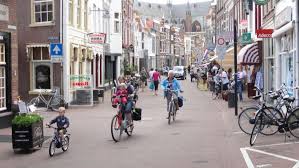WORLDVIEW: Life after the pandemic

By Jonathan Power
Perspective and proportion are everything in this Pandemic of Fear that now consumes our attention and our daily lives.
With very rare exceptions the media ignores this. As I write there have been world-wide 436,005 deaths from coronavirus. But a remarkable, barely noticed, 4,137,712 have recovered.
In comparison the number who died last year from AIDS/HIV is 770,000. In its worst year- 2004- it claimed 1,600,000 lives.
The number who died from alcohol consumption last year was 3 million. Smoking claimed 8 million deaths last year. The number from malaria was almost the same as deaths from Corona- 416,000. The number who died in motor accidents was 1.35 million. Traffic injuries are now the top killer of people aged five to twenty-nine.
The screamers must stop or at least get a hold of themselves- except in countries like India and Brazil where the Coronavirus is in danger of becoming out of control.
A simple question is raised: Why aren’t we putting the same energy as we are into the Coronavirus into defeating AIDS/HIV, alcoholism, smoking, malaria infections, and traffic accidents? Why? Why? Why? The human being is supposed to be rational or, at least, attempting rationality.
Alcohol could be much higher priced by taxation and the number of sales outlets limited- and only opened for a limited number of hours a day and closed on Sunday, as in Sweden. Cigarettes should also be taxed much more and their packets should have the gory pictures on one side as practiced in Europe, but with brown cardboard on the back, as not practiced. The punishment for smoking underage should be raised. The use of nets in malaria-infested countries should become mandatory.
It is when we start to discuss car accidents that the argument becomes more complex. Tobacco and alcohol are not necessary for life. (Neither are drugs but drug deaths are only 166,000, contrary to the general, often hysterical, perception.) But cars and trucks in many places are.
1.35 million motor deaths are far more than deaths from alcohol and nearly three times as many who die from the Coronavirus. The number is growing fast. This figure doesn’t include the number who are injured, not killed, but some grievously. That’s 50 million people.
In the more developed countries, death rates caused by vehicles have been falling. In the US by a third since the middle of the last century. Even so, 36,560 died last year- about as many who were killed by guns. Improved car safety, pioneered by Sweden’s Volvo, and tougher drinking-driving laws have had a good impact.
Set against that the increase in bicycling and walking has increased America’s traffic accidents. Bike accidents totaled 7,140 in 2018, a 41% increase in a decade.
The poorer Third World countries which have just 1% of the world’s motor vehicles have 13% of the deaths. Ethiopia has ten times per head the number of traffic deaths than Sweden.
Traffic deaths
Janette Sadik-Khan, a former New York commissioner of the department of transportation, and her deputy, Seth Solomonow, in their book, “Streetfight: Handbook for an Urban Revolution” argue that it is roads that are the main problem.
Traffic deaths in the US, they write, were 26 in 1899 and rose to 29,592 in 1929. As car numbers rose engineers widened roads both in the countryside and in the cities. As we have known for a long time traffic expands to fill the space available. Until very recently this observation was ignored. Interestingly, New York has a much lower number of deaths than other US cities- its streets are narrow, impossible to widen, with traffic forced to move slowly. It also has wide sidewalks unlike many other urban areas. In central Dubai, they have very few sidewalks at all.
Research has shown that cyclists and pedestrians die not because they don’t wear helmets or don’t take care but because of the behavior of vehicle drivers- ignoring zebra crossings, speeding, being drunk or drugged and also because of using a mobile phone while driving.
When the two authors worked for Mayor Michael Bloomberg they opted for means that were simple and cost-effective. “Instead of dreaming up megaprojects, we took a long, hard, look at the streets we already had, this time from the perspective of the most vulnerable people”. Between 2007 and 2013 they organized the redesign of lengthy portions of 137 streets and revamped 113 intersections. They expanded the space to walk, decreased crossing distances for pedestrians, and made streets navigable enough for children and old people. Speed limits were reduced, streets narrowed and monitoring cameras introduced. 2.5 acres of Times Square became car-free. Broadway became a walkers’ haven.
All these reduced traffic deaths in the city by 44%. There was a reduction of 37% in pedestrian deaths.
Mexico City’s mayor, Miguel Angel Mancera, did much the same with similar good results. Before the city had been one of the world’s most dangerous. In two years the number of bike riders killed annually fell by 78%.
If the transport and traffic authorities were given the same budgets now being spent on the lesser killer, Coronavirus, they would save the lives of many more than are being saved from the virus.
Of course, making significant changes in traffic problems are more straightforward than dealing with the Coronavirus, drinking or tobacco smoking, AIDS/HIV and malaria. These are more demanding. But there is no good reason why a lot more progress shouldn’t be made with these five as has happened with traffic deaths in the developed countries
This doesn’t mean cutting the budgets for overcoming the effects of the Coronavirus. It means increasing them for these other needs. The money is there- in reduced arms spending, in taxing the ever-growing high incomes of the well-to-do and the large sums often inherited, in taxing inflated salaries in parts of industry and banking, in imposing high taxes on drinking and smoking, and in much higher taxes on car and plane fuel. (We also mustn’t forget the need for financing the defeat of climate-warming.)
Corona has been a useful human experience. It has shown what in severe crisis governments can do if they have to. Now we need a restructuring of society’s priorities. We need a road map to the future. Thus far only a handful of governments have tried to make one. Humanity has been given a warning. We must act while the iron is hot. As the great Afro-American novelist James Baldwin wrote, “It will be the fire next time”.





